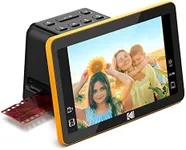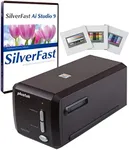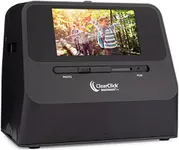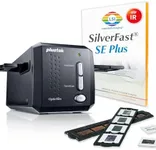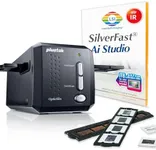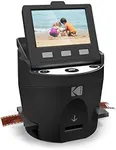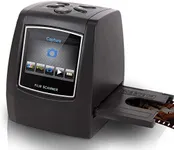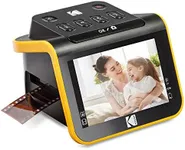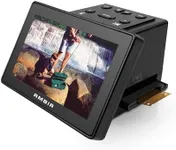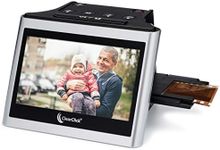Buying Guide for the Best 35mm Slide Scanners
Choosing the right 35-mm slide scanner can be a bit overwhelming, but with the right approach, you can find a model that suits your needs perfectly. The key is to understand the specifications that matter most and how they align with your specific requirements. Whether you're a professional photographer looking to digitize your archive or a hobbyist wanting to preserve family memories, knowing what to look for will help you make an informed decision.ResolutionResolution refers to the amount of detail the scanner can capture, measured in dots per inch (DPI). Higher resolution means more detail and clarity in the scanned images. For professional use or large prints, look for scanners with higher DPI, typically 4000 DPI or more. For casual use or web sharing, a lower DPI, around 2400 DPI, may suffice. Consider your end use of the scanned images to determine the appropriate resolution.
Color DepthColor depth indicates the number of colors the scanner can capture, measured in bits. Higher color depth results in more accurate and vibrant colors. Professional photographers should look for scanners with at least 48-bit color depth to ensure high-quality scans. For general use, 24-bit color depth might be adequate. Think about the importance of color accuracy in your scanned images when choosing the color depth.
Dynamic RangeDynamic range measures the scanner's ability to capture details in both the darkest and lightest areas of an image. A higher dynamic range means better detail in shadows and highlights. If you have slides with a lot of contrast or want to preserve subtle details, look for scanners with a higher dynamic range, typically indicated by a Dmax value of 3.6 or higher. For less critical applications, a lower dynamic range may be acceptable.
Scanning SpeedScanning speed refers to how quickly the scanner can process each slide. Faster scanning speeds are beneficial if you have a large number of slides to digitize. Professional users or those with extensive collections should look for scanners with higher speeds, often measured in seconds per scan. Casual users with fewer slides may not need the fastest scanner and can opt for models with slower speeds.
Software CompatibilitySoftware compatibility is crucial for ease of use and functionality. Ensure the scanner comes with software that is compatible with your operating system and meets your editing needs. Professional users might require advanced software with features like dust removal and color correction. Hobbyists may prefer simpler software that is easy to use. Check the software features and compatibility to ensure it aligns with your workflow.
ConnectivityConnectivity options determine how the scanner connects to your computer or other devices. Common options include USB, Wi-Fi, and Bluetooth. USB is standard and reliable, while Wi-Fi and Bluetooth offer wireless convenience. Consider your setup and preference for wired or wireless connections when choosing a scanner. Professional setups might benefit from faster, wired connections, while casual users might prefer the flexibility of wireless options.
Build QualityBuild quality refers to the durability and construction of the scanner. A well-built scanner will last longer and perform more reliably. Look for models with sturdy construction, especially if you plan to use the scanner frequently. Professional users should prioritize build quality to ensure longevity, while casual users might be satisfied with lighter, less robust models. Assess your usage frequency and environment to determine the necessary build quality.
